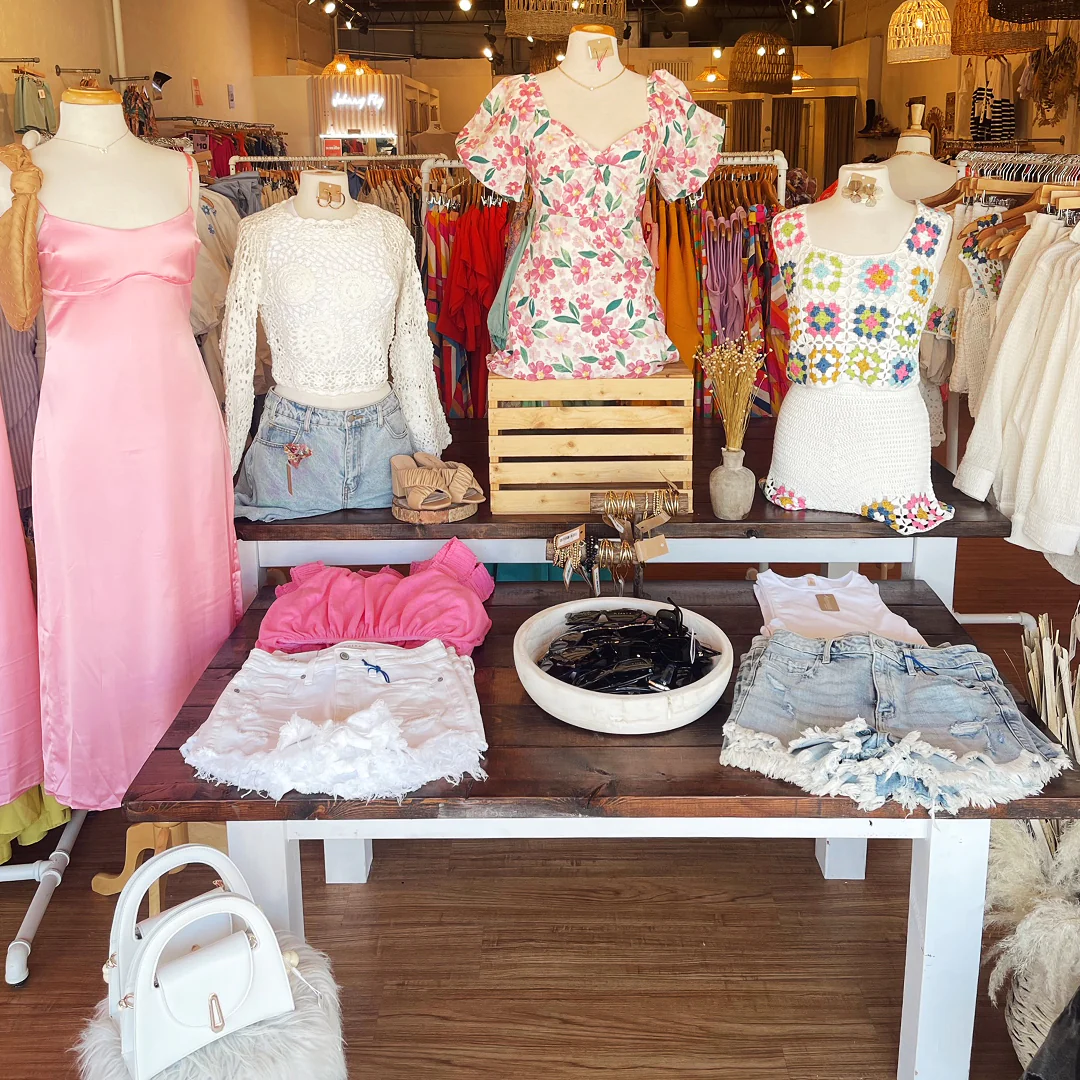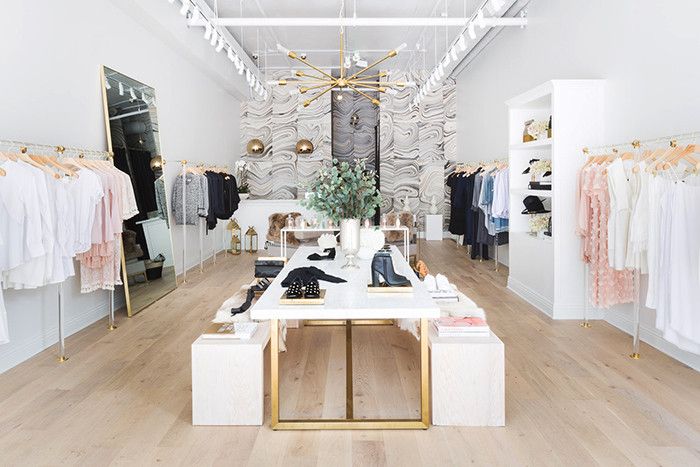Raise Your Closet with Spectacular Boutique Fashion Fundamentals
Raise Your Closet with Spectacular Boutique Fashion Fundamentals
Blog Article
A Deep Study the Globe of High-Fashion Runways: Comprehending Garments as Art
High-fashion runways have become arenas where apparel transcends its utilitarian origins, evolving into an innovative kind of imaginative expression. Designers, much like skillful artists, weave elaborate stories through form, color, and fabric, redefining and testing typical standards appeal standards. These shows are greater than mere screens; they are immersive experiences, where every stitch and seam informs a tale rich with social value and progressive innovation. As we discover these sartorial eyeglasses, we must ponder: what role does fashion play in shaping social worths, and just how does it mirror the ever-changing tapestry of human emotion and identity?
The Evolution of Runway Reveals
The trajectory of runway shows has changed significantly over the decades, advancing from special market events to fascinating eyeglasses that blend fashion with art. Commonly, runway shows made love events, held in ateliers or little locations, largely attended by purchasers and sector insiders. These very early presentations concentrated on the garments' craftsmanship and business viability, offering a straight and practical screen of seasonal collections.
As the style market increased, the nature of path programs started to transform. The 1970s and 1980s noted a turning factor, with developers seeking to distinguish themselves through even more theatrical discussions. This age saw the rise of sophisticated sets, choreographed versions, and thematic narratives, declaring a brand-new age where the path ended up being an experiential platform. The shows transformed into a type of narration, where each collection conveyed a distinctive story or idea.
Over the last few years, modern technology and social media sites have further changed path programs, making them accessible to a worldwide target market. Livestreaming and electronic systems have actually equalized fashion, allowing enthusiasts worldwide to witness these events in real-time (boutique fashion). This development reflects a wider cultural change, where high-fashion paths offer as a dynamic junction of advancement, design, and performance
Designers as Visionary Artists
Designers in the high-fashion sector have actually obscured the lines in between useful garment development and the theoretical world of art. By welcoming imaginative techniques such as sculpture, paint, and avant-garde setups, designers craft garments that test conventional fashion norms and raise them to art forms.
Visionary designers draw ideas from a myriad of resources, consisting of abstract art, historic referrals, and personal stories. They have an unique capacity to visualize and emerge concepts that press the limits of conventional fashion, usually redefining visual paradigms while doing so. This innovative resourcefulness is showcased with dramatic silhouettes, cutting-edge materials, and intricate craftsmanship, which invite audiences to experience style as more than just wearable things.
In addition, the path offers as a canvas for these artists, where lights, music, and established style coalesce to create immersive experiences. These presentations are not just displays of garments yet are orchestrated efficiencies that stimulate feeling and prompt idea, attesting the designer's function as a real artist in the modern social landscape.
Cultural Impacts in vogue
Social tapestry weaves its detailed patterns right into the fabric of fashion, affecting developers globally. The vibrant interchange of social stories, customs, and signs educates and motivates collections that grace high-fashion paths.
The impact of culture on style is commonly seen in the reinterpretation of conventional garments and patterns. For instance, the usage of Japanese kimonos, Indian saris, or African prints in modern style shows a blend of social authenticity and modern visual appeals. Developers such as Valentino's Pierpaolo Piccioli and Alexander McQueen's Sarah Burton have review been recognized to integrate abundant social concepts right into their couture collections, equating background right into wearable art.

Technology in Material and Design
Innovation in material and design regularly reshapes the landscape of high-fashion, pushing limits and redefining possibilities. In recent times, technical improvements have substantially added to this advancement, presenting products that test traditional assumptions. Textiles embedded with wise fibers, with the ability of transforming shade or regulating temperature level, are no more confined to the realm of sci-fi. Designers are significantly exploring the integration of technology, such as 3D printing, which enables the creation of intricate structures that were formerly unbelievable.
Additionally, sustainability has ended up being a pivotal style in textile innovation. The style sector is experiencing a rise in making use of green products, originated from recycled plastics, organic fibers, and even eco-friendly parts. These developments not just supply new appearances and appearances however likewise address essential environmental problems. Developers are welcoming these materials to craft garments that are both aesthetically striking and mindful of their eco-friendly footprint.
In regards to style, progressive shapes and speculative forms are continually changing the runway. By incorporating unusual materials and innovative techniques, designers cultivate garments that blur the line in between style and art, setting brand-new criteria for creativity and expression in the high-fashion sphere.
Influence of Style on Culture
Style wields a profound impact on society, offering as both a representation of social identity and a catalyst for social change (boutique fashion). Through its development, style has mirrored social shifts, enveloping the zeitgeist of numerous eras.
Additionally, fashion has the power to bridge cultural gaps, fostering understanding and appreciation among diverse teams. As globalisation increases, the cross-cultural exchange of style ideas comes to be progressively considerable, promoting inclusivity and diversity. The increase of streetwear, stemming from city subcultures, illustrates exactly how style can transcend socio-economic borders, approving people see here now a way of self-expression and empowerment.
Basically, fashion is not just concerning looks; it is a dynamic pressure that influences worths, attitudes, and social progress (boutique fashion). By continuously interacting with social and social currents, style continues to be an integral part of the collective human experience

Conclusion
Designers, comparable to visionary artists, orchestrate collections that mirror identity, see here now emotion, and social narratives, challenging conventional looks. This crossway of style and virtuosity not just captivates audiences globally however likewise affects social perceptions and advertises a much deeper appreciation for social diversity.

Social tapestry weaves its intricate patterns into the fabric of fashion, affecting developers worldwide.Style wields an extensive influence on culture, serving as both a representation of cultural identification and a catalyst for social adjustment.
Report this page